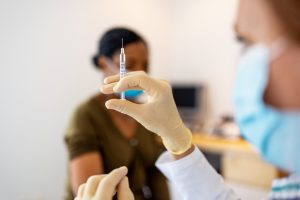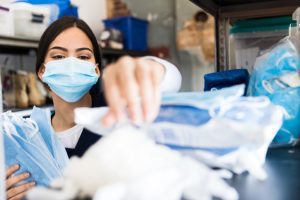Emerging Infectious Diseases Testing Strategies
Testing, whether for general public health surveillance or for the detection of active or past disease, is at the center of any pandemic response. Efficacious testing methodologies ensure that clinicians have the needed laboratory findings to properly isolate, quarantine, detect, and treat potential pandemic patients.
FDA Regulatory Process for Novel Diagnostics
The Food and Drug Administration (FDA) is the federal regulatory agency responsible for the approval of all laboratory methodologies even during a declared pandemic. The FDA’s Emergency Use Authorization, or EUA, is an expedited review process available for both medications and laboratory technologies. This pathway allows the FDA to fast-track medications and other medical technologies during a declared public health emergency. There are two primary types of COVID-19 laboratory tests that healthcare professionals use. The first is to detect the presence of active infection in a patient. This can be accomplished via a rapid antigen or molecular based test. The second option is an antibody test that detects whether or not an individual has previously had COVID-19 infection and produced antibodies as a result of the recovery process. Due to the fast-changing nature of the approval of medical products and medicines, clinicians and healthcare facilities should consult the FDA’s website on a frequent basis.
Types of Infectious Diseases Testing
CDC has developed two laboratory tests that identify SARS-CoV-2, the virus that causes COVID-19. The first test for COVID-19 diagnosis that CDC distributed, released in February 2020, is the CDC 2019-Novel Coronavirus (2019-nCoV) Real-Time RT-PCR Diagnostic Panel, a test that accurately detects SARS-CoV-2 in respiratory specimens. CDC released a second assay in July 2020, the CDC Influenza SARS-CoV-2 (Flu SC2) Multiplex Assay, which permits public health laboratories to run three tests in a single reaction well.
















